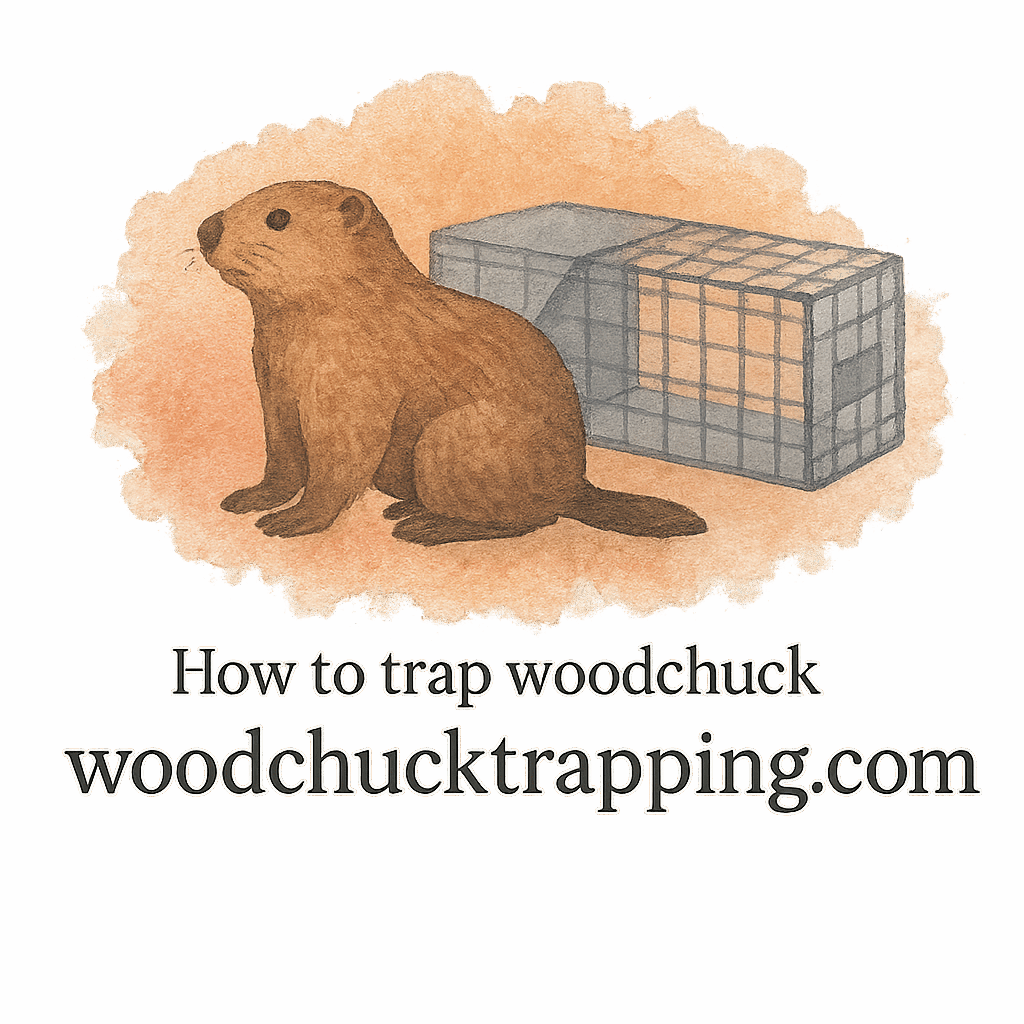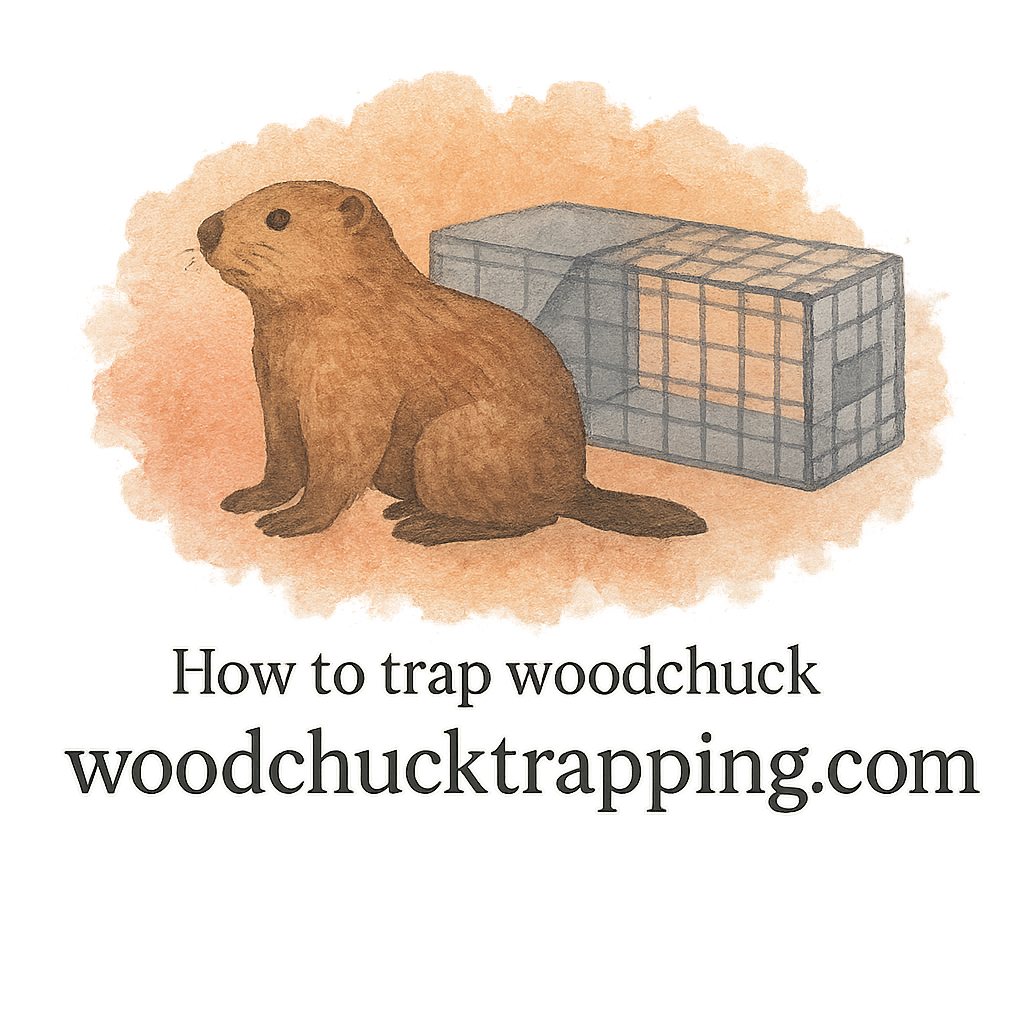Introduction to Woodchuck Baiting
Trying to trap a woodchuck and wondering why your bait isn’t working? Here’s a little secret: it’s probably the weather. These burrowing creatures, also known as groundhogs, are highly sensitive to temperature, humidity, and even wind direction. Trapping them effectively means working with the weather, not against it.
Why Weather Matters in Woodchuck Trapping
Woodchucks are crepuscular, meaning they’re most active around dawn and dusk—but their habits shift based on weather. Rain, heatwaves, and cold snaps all affect their behavior. Miss these signals, and you might as well be baiting an empty burrow.
Importance of Understanding Woodchuck Behavior
To outsmart a woodchuck, you need to understand how it thinks. These critters rely on scent and routine. If your trap doesn’t smell right, or it’s placed at the wrong time, they’ll avoid it like the plague. That’s where weather comes in.
Tip #1: Use Warmer Days for Maximum Activity
Ideal Temperature Range for Trapping Success
Woodchucks love moderate warmth—think 60°F to 75°F. Anything below 50°F or above 85°F, and they hunker down. On warm spring and fall days, they’ll be out and about, munching and exploring. That’s your prime window.
How Body Temperature Affects Feeding Patterns
These animals regulate their body heat based on the environment. When it’s too cold, they conserve energy by staying underground. So set your traps during warm days when they’re naturally more active.
Tip #2: Avoid Rainy Conditions
Impact of Moisture on Scent Bait
Rain is a scent killer. It washes away the aroma trail that guides woodchucks to your bait. Wet conditions dilute even the strongest lure. Check out Baiting and Luring for choosing weather-resistant scents.
Trap Malfunctions Due to Wet Weather
Waterlogged traps can jam or rust. Worse, soggy bait is less appealing. Make sure your gear is designed to withstand moisture, especially if you’re using traditional box or compact traps like those discussed under the Compact Traps Tag.
Tip #3: Time Your Trapping Around Barometric Pressure Changes
How Low Pressure Triggers Foraging Behavior
Ever notice animals feed more just before a storm? That’s due to falling barometric pressure. Woodchucks are no different—they’ll forage heavily in anticipation of a change. That’s your golden hour. For more tactics like this, visit Trapping Techniques.

Tip #4: Focus on Mornings After Cool Nights
Why Morning Sun Drives Movement
Cool nights send woodchucks into their burrows early. But as the sun warms up the soil in the morning, they come out fast. Set your traps before sunrise to catch them at their hungriest.
Adjusting Trap Placement Based on Sun Exposure
Place traps where morning light hits early. South- or east-facing locations are ideal. Avoid shadowy spots or damp areas—they’ll be the last to attract movement.
Tip #5: Use Dry, Windless Days for Scent Reliability
Role of Wind in Dispersing Scent Trails
A windy day may seem harmless, but it can sabotage your scent strategy. Wind scatters bait smells unpredictably, confusing the animal. On windless days, your lure travels straight to their sensitive noses. See the Scent Bait Tag for more scent-savvy strategies.
Tip #6: Match Baiting Strategy with Seasonal Changes
Spring Feeding Frenzy: Greens and Roots
In early spring, woodchucks are ravenous. They crave leafy greens and roots to bounce back from hibernation. This is the time to use spinach, dandelion greens, and even celery.
Summer Patterns: Fruits and High Water Content Plants
Summer heat makes hydration essential. Woodchucks love watermelon, cantaloupe, and cucumbers. These juicy treats work wonders when temps soar.
Fall Strategy: Preparing for Hibernation
As winter nears, they bulk up on carbs. Apples, corn, and carrots are irresistible. Trap success spikes as they stockpile calories. For reducing long-term damage, don’t miss Prevention and Damage Control.
Weather Gear and Equipment Recommendations
Best Weather-Proof Traps
You’ll want traps that resist rust and won’t malfunction in moisture. Stainless steel or powder-coated models are ideal. Check out Equipment Reviews to find the most reliable weather-resistant gear.
Safety Considerations for Trapping in Various Weather
Humane and Legal Weather-Related Practices
In extreme heat or cold, trapped woodchucks suffer fast. Always check traps regularly and avoid risky weather to remain compliant with wildlife laws. Visit Laws and Safety to stay updated.
Common Mistakes to Avoid When Baiting During Unfavorable Weather
- Baiting right before or during rainfall
- Ignoring wind direction
- Using perishable bait in humid weather
- Leaving traps unchecked in temperature extremes
Conclusion: Timing, Tactics, and Tools for Weather-Wise Trapping
Success in baiting woodchucks isn’t about luck—it’s about strategy. Pay attention to the skies, match your bait to the season, and use the right equipment. When you trap smart, you trap effectively. Now that you’ve got weather on your side, it’s time to put these tips to use.
FAQs
1. What’s the best time of year to bait woodchucks? Spring and early fall are ideal. Woodchucks are active and food-driven during these periods.
2. Can I bait woodchucks in winter? Not really. They hibernate through the cold months, so trapping is nearly impossible.
3. Do woodchucks come out in the rain? Rarely. They prefer dry, warm weather for foraging.
4. How does humidity affect bait scent? High humidity can muffle scents, while dry air helps it travel better.
5. What bait works in all weather conditions? Root vegetables like carrots and apples tend to hold up well across seasons.
6. How can I protect bait from weather damage? Use bait boxes or covers, and refresh bait often to maintain scent potency.
7. Is it better to bait in morning or evening? Mornings are best, especially after cool nights. That’s when woodchucks are most active.
Semantic Tags and Internal Links Used:
- Baiting and Luring
- Trapping Techniques
- Equipment Reviews
- Laws and Safety
- Prevention and Damage
- Tag: Scent Bait
- Tag: Compact Traps
Explore more woodchuck trapping resources at WoodchuckTrapping.com.


